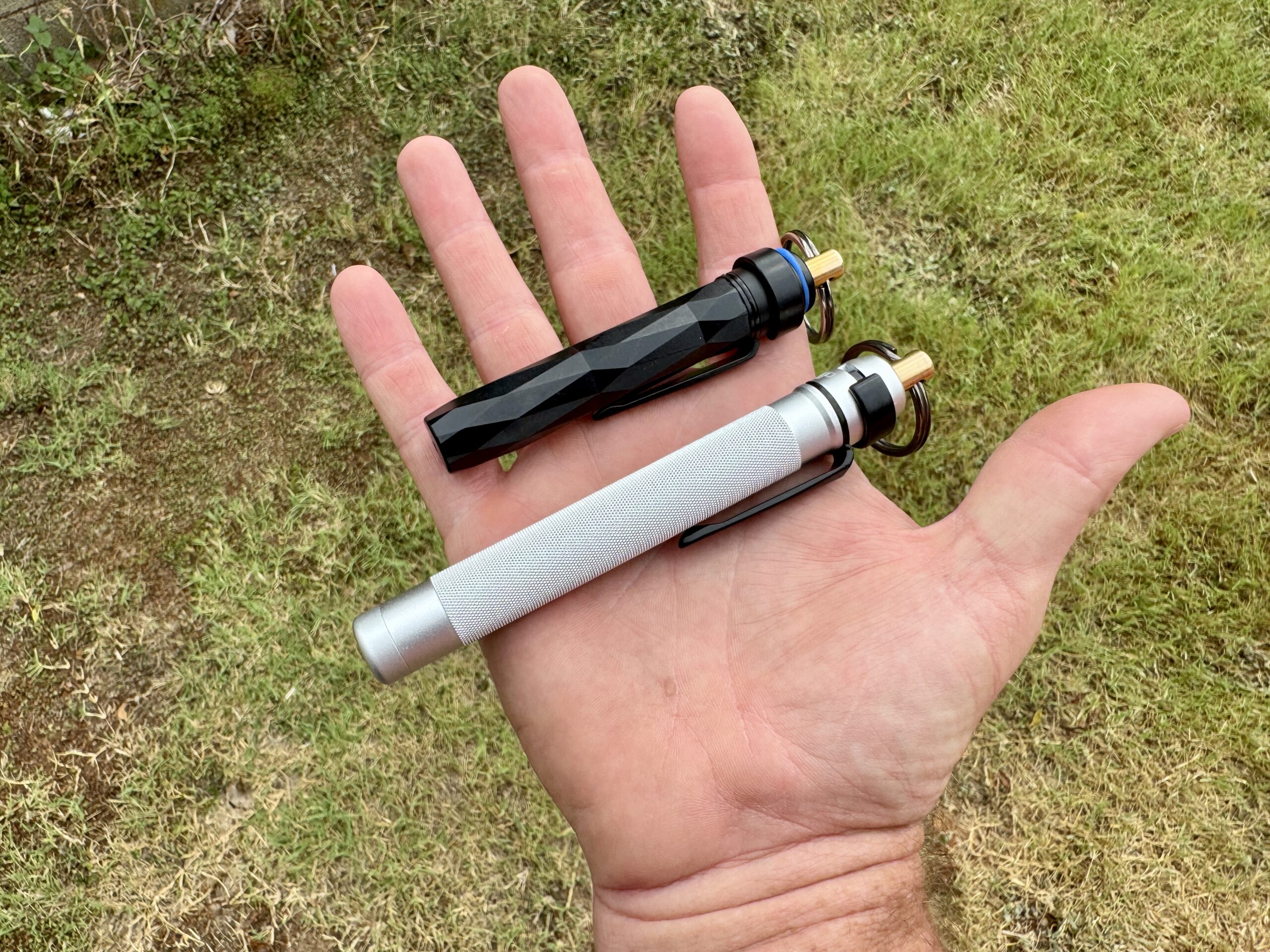I’ve now carried both the ASP Metro Defender D2 and the ASP Sport Defender D1 for several weeks, tested them with inert training cartridges, and worked them into daily routines.
My first look at the two covered basic specs and first impressions (read that here).
This follow-up is different. It’s based on living with them in my pocket (mostly), on my keyring (a little bit), and in my bag (some), then actually pressing the actuator and spraying them..
ASP’s Deployment Method
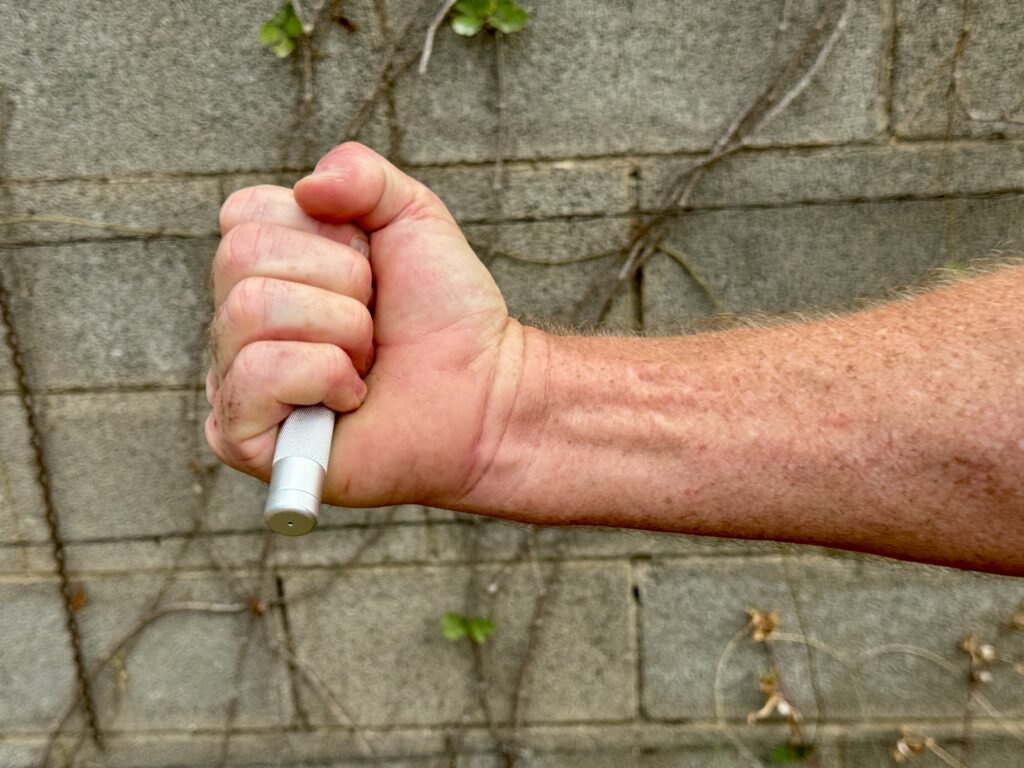
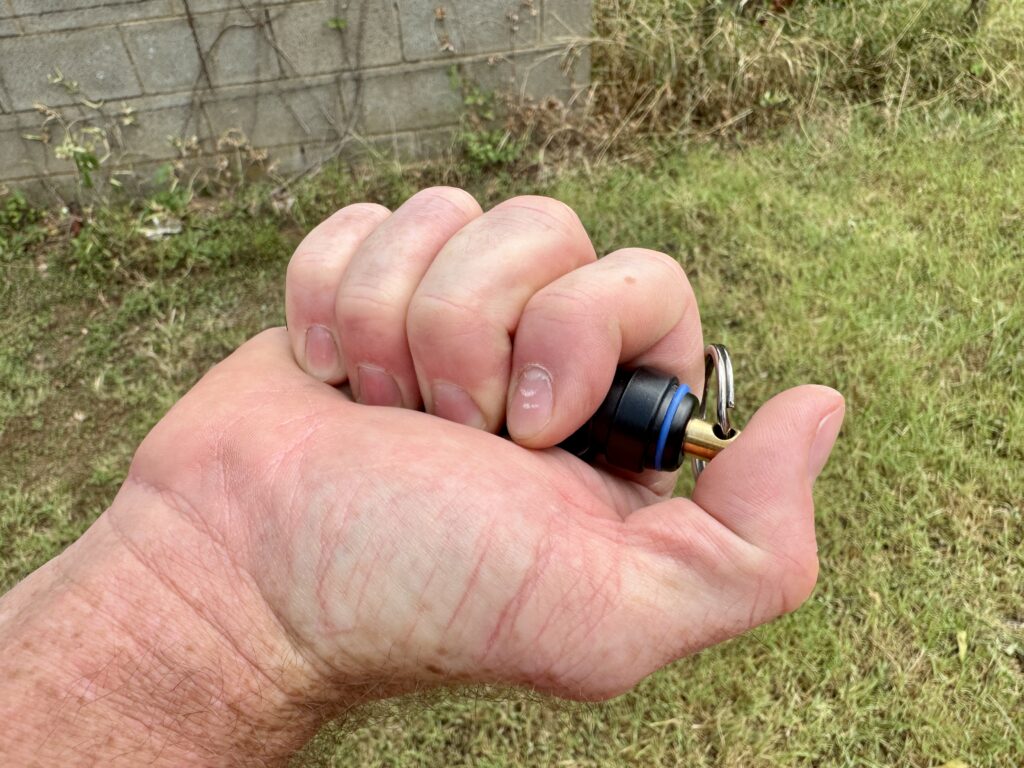
Both models use ASP’s Defender system…built around a “flashlight-style” deployment.
There’s a rotating safety collar that blocks the button until you turn it.
Once it’s armed, you press the tailcap with your thumb, and the spray comes out the front.
It’s simple and intuitive, and the tailcap press feels natural because it’s the same motion as turning on a flashlight with a tailcap.
After a little practice, I didn’t need to look down or think about it. I could draw, rotate the collar, and press in one motion.
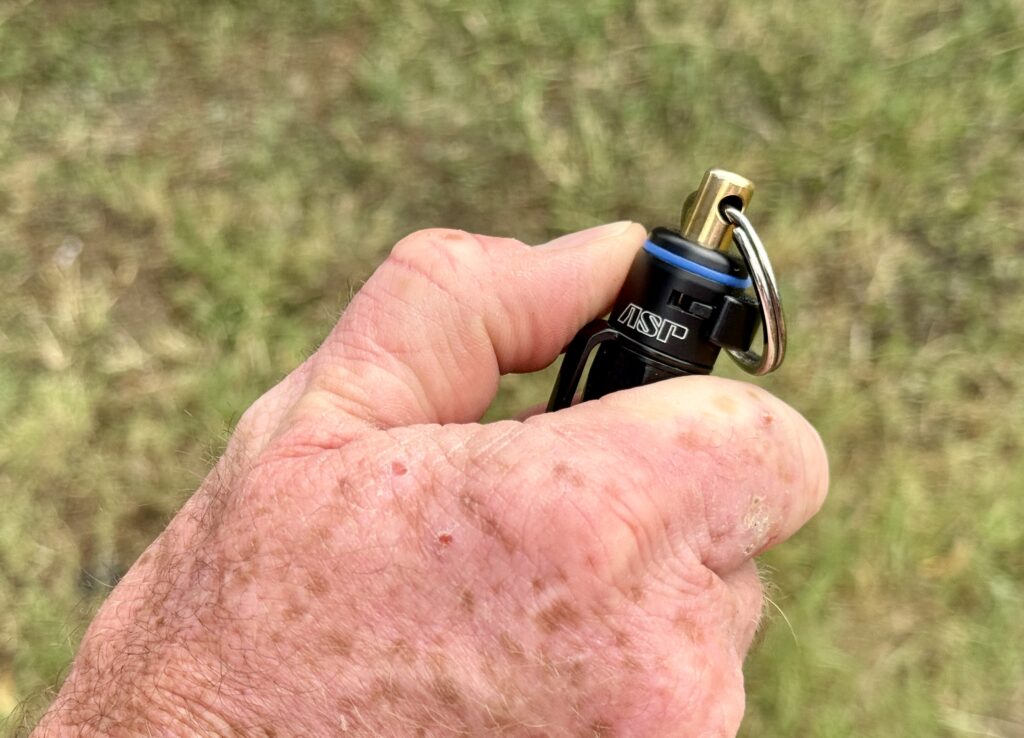
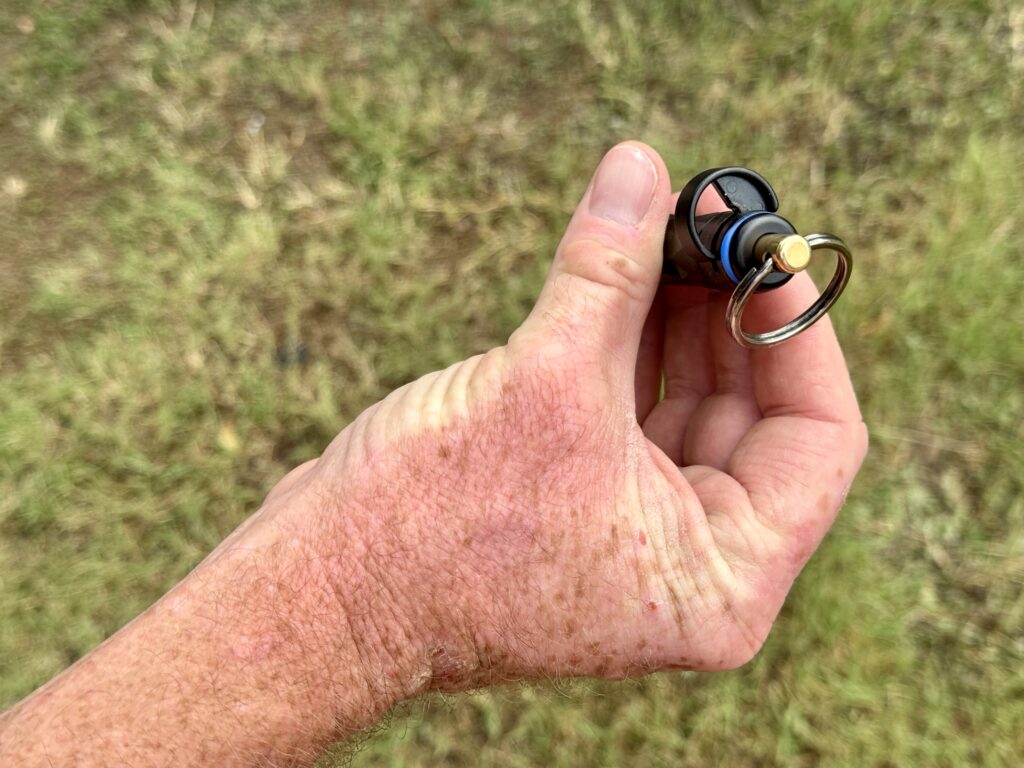
With the inert cartridges, the spray came out consistently every time.
This design matters because in a stressful encounter, fine motor skills disappear. You want big, simple actions, and a thumb press on a tailcap is about as simple as it gets.
Metro Defender D2: Solid and Robust
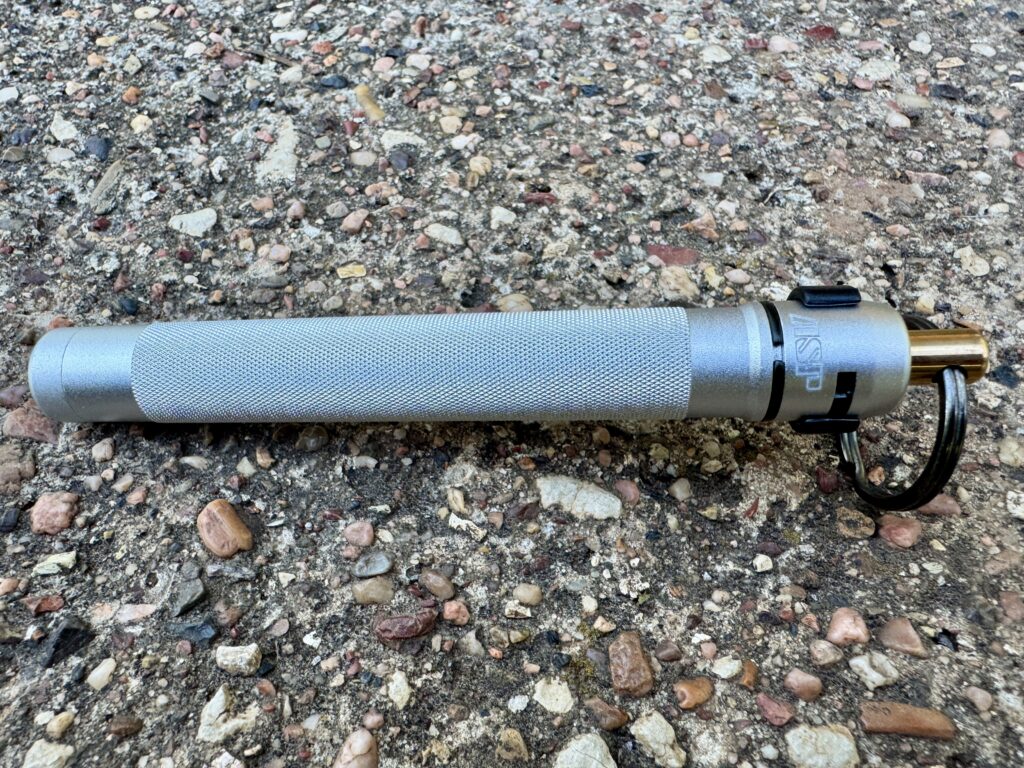
The Metro Defender D2 feels like a small flashlight. It has a solid aluminum body, a bit of weight, and rides quietly clipped to a pocket or keyring.

- Daily carry: I clipped it in my jeans pocket some, but mostly dropped it into my pocket and forgot it was there. The aluminum body feels secure with no flex or cheap feel.
- Testing: Inert spray testing showed a consistent mist out to about five feet (it was really windy, which did impact some of the spray).
- Strengths: Discreet, feels like a normal EDC item, durable build.
- Trade-offs: Slightly heavier than the D1. Looks kind of like a kubotan, which, coincidentally, it could be treated like one.
It doesn’t scream “pepper spray” to anyone who sees it.
Sport Defender D1: Lightweight and Grippy
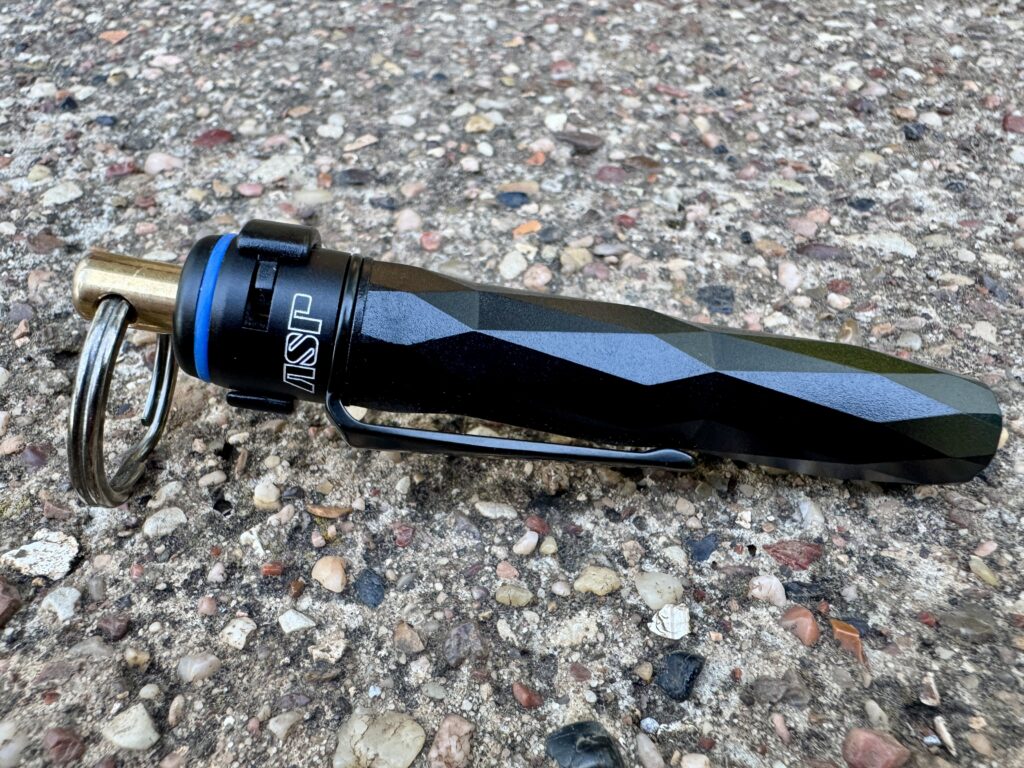
The Sport Defender D1 is polymer, textured, and cut with finger grooves. It feels like gear, not an accessory, which is a plus.
- Daily carry: dropped it into my pocket and my backpack. The lighter weight made it vanish.
- Grip: The finger grooves made it a bit easier to hold when sweaty.
- Activation: Same tailcap deployment. Safety disengaged smoothly.
- Testing: Inert spray gave the same ~5-foot range.
- Strengths: Lightest option, good grip.
- Trade-offs: Doesn’t feel as “robust” as the D2. More utilitarian, less sleek.
This one is better for workouts, running, or clipping to gear where weight and overall size matter.
Spray Performance and Inert Testing
Both share the same insert system: replaceable cartridges with ~6–12 half-second bursts of 10% OC at 1.4% major capsaicinoids. That’s police-grade strength.
During testing with inert inserts:
- The spray pattern was a mist, not a stream. It covers a larger area but drifts in the wind. Basically, it creates a barrier between you and the target.
- Range felt reliable to five feet…close range only.
- Deployment was quick once the safety was off.
- Each burst was short but strong. If you don’t practice, you could run it dry in seconds.
This isn’t meant for extended fights. It’s a fast deterrent that buys you a window to escape.
Build and Reliability
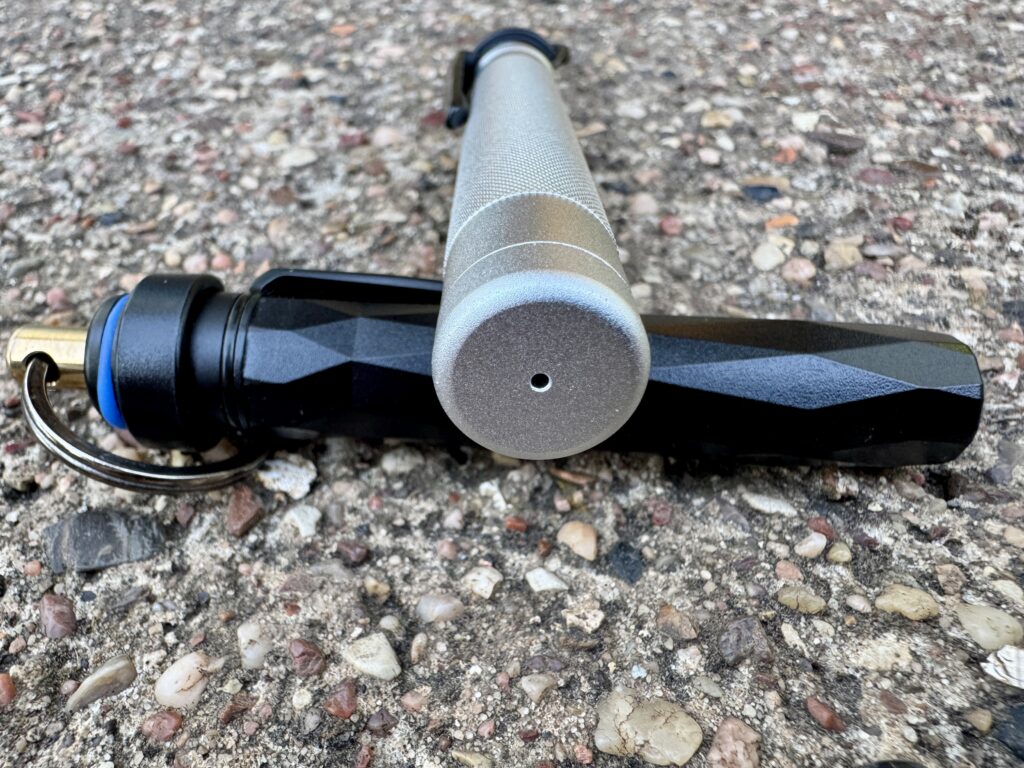
- The D2’s aluminum body feels like it could take years of abuse. Even in a pocket with keys and change, it didn’t scratch up at all.
- The D1’s polymer body feels tough but lighter. It won’t dent like aluminum, but it doesn’t have the same heft.
- Both safety collars worked consistently. No accidental sprays in pocket or bag (that’s a good thing).
- Inserts popped in and out easily. Inert and live inserts swap the same way, so training carries over.
Who Each One Fits
- Metro Defender D2: Best for discreet urban carry or sliding into a pocket. Looks like a flashlight. Feels durable.
- Sport Defender D1: Best for active use, gym bags, running, or light EDC.
Both work, but they feel different in practice.
Bottom Line
I trust both as it relates to carry and functionality. They share the same deployment system, the same inserts, and the same OC strength. The difference comes down to how you want to carry:
After weeks of carrying and testing them with inert cartridges, I’d call both practical options for everyday defense. They’re small, quick, and reliable…exactly what you want in a last-ditch tool.

